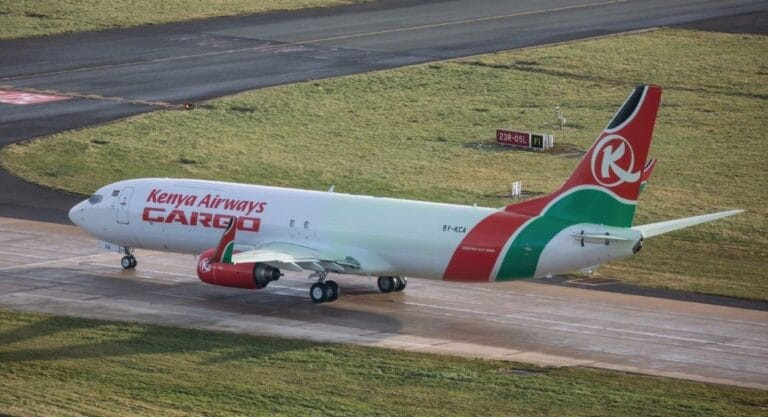As momentum builds around improving trade across Africa, regional carriers are looking to strengthen connectivity through deeper integration under the African Union’s Single African Air Transport Market (SAATM).
“The continent has made significant progress when it comes to ratifying the Single African Air Transport Market (SAATM). Over 80 percent of African countries have already embraced the initiative, which is quite encouraging,” Peter Musola, Head of Cargo Commercial at Kenya Airways, said.
However, despite the widespread ratification of SAATM, operational fragmentation remains a significant challenge, with a few countries still in the process of internal consultations, debating whether full liberalisation aligns with their national interests.
The stakes are particularly high for landlocked African nations such as Uganda, Rwanda, and Burundi, which rely heavily on air and road freight through regional ports like Mombasa and Dar es Salaam.
“It’s important to remember that a large number of African countries are landlocked—they lack direct access to sea ports,” Musola said. “This really underscores the critical importance of liberalising airspace across Africa.”
One of the most striking examples of the connectivity gap is the inefficient routing of cargo within the continent.
“Moving flowers from Nairobi to Kinshasa—a trip that should take three hours—often involves routing through Europe,” Musola noted. “That turns a simple flight into a 15-hour journey.”
To help solve this, Kenya Airways is investing in more agile and versatile aircraft for regional operations. The airline has added two Boeing 737-800 freighters to its fleet, allowing it to reach nearly all major destinations in Africa within six hours.
Regional vision
While Kenya Airways is expanding its intercontinental reach into the Middle East and India, the carrier’s strategic focus remains on driving Africa’s prosperity.
“By connecting people, cultures, and markets, Kenya Airways is committed to leveraging its geographical positioning, altitude, and network capabilities to support the continent’s growth,” Musola expressed. “These factors are at the core of how we plan and deploy our networks, ensuring we contribute to Africa’s continued development and connectivity.
“Whether reaching South Africa, Namibia, the Horn of Africa, or Central and West Africa, our hub at Jomo Kenyatta International Airport enables efficient connections across key markets.”
To capitalise on opportunity, Kenya Airways has strategically positioned Sharjah as its de facto Middle Eastern hub and, looking ahead, the carrier plans to expand further into Saudi Arabia, with destinations like Jeddah and Riyadh, as well as explore opportunities in India and the broader subcontinent.
“We are perfectly positioned to drive growth within the African continent,” Musola stated. “We’re seeing fantastic opportunities and new business ventures emerging across the continent—many of which we hadn’t anticipated before. This is an exciting time, and Kenya Airways is dedicated to supporting Africa’s continued growth and connectivity.”




